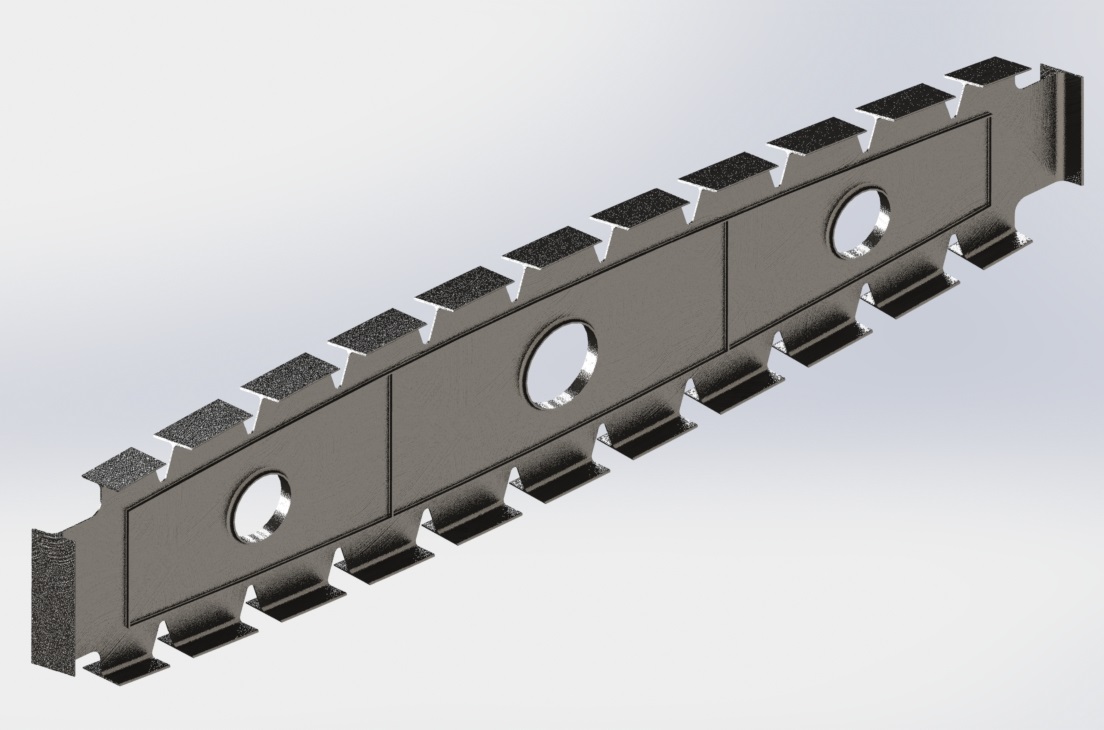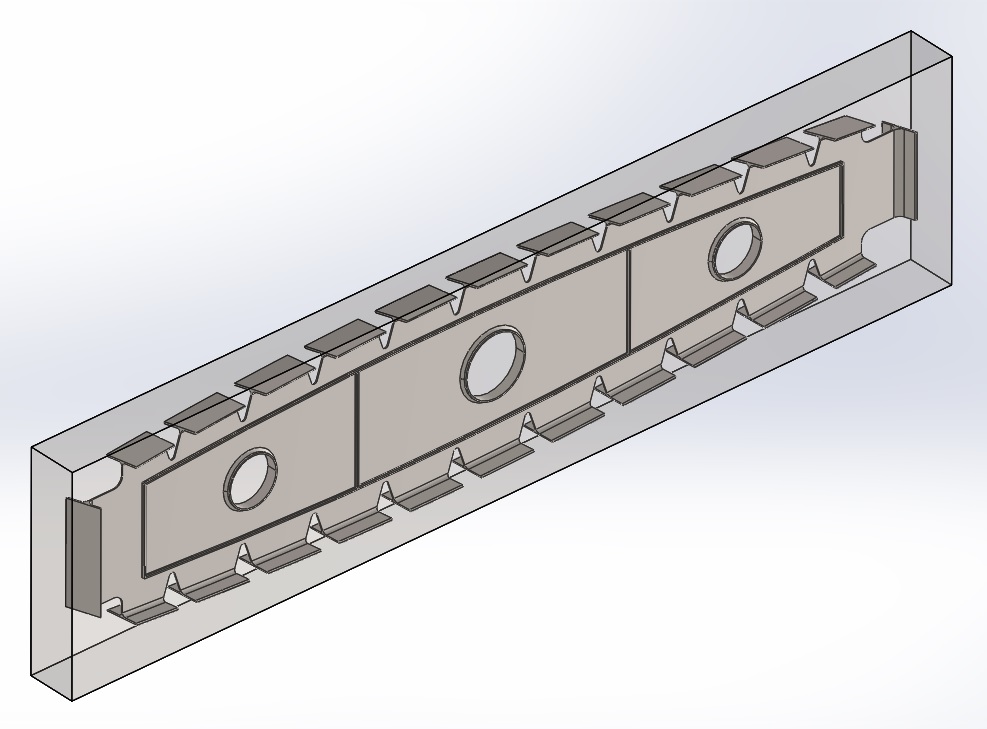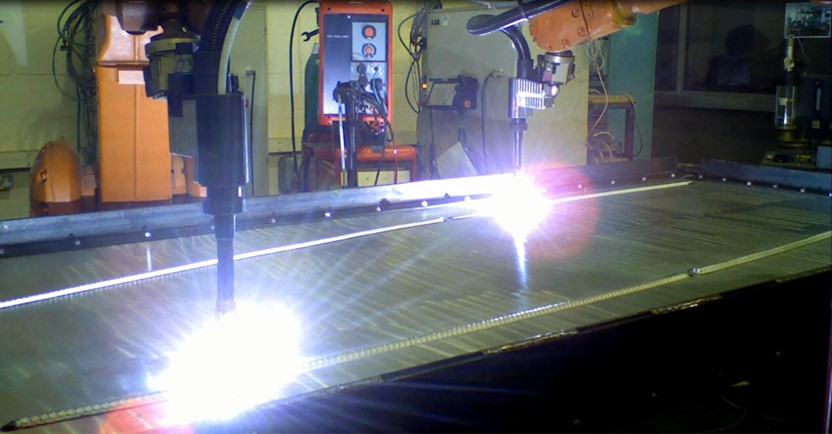If you’ve read all the hype about 3D printing in recent years, you would be forgiven for thinking that we should all be driving around in 3D printed cars and 3D printing our own furniture by now. Of course, in reality any new manufacturing process takes time to move into production, and after the hype there is the hard work to develop commercially viable applications.
3D printing (or additive manufacturing (AM) as it is more formally known) refers to a family of manufacturing process where material is added layer by layer to form a finished part. The part is modelled using 3D CAD, then sliced into layers and a path is planned to fill each layer. The AM system then deposits the part layer by layer in an automated process. There are many different AM processes and materials but they all follow a similar approach. You can read more about 3D printing in Iestyn Jowers’ design blog here: https://www.open.ac.uk/blogs/design/3d-printing-what-is-it-good-for/.
My research has investigated how AM can be used to produce aircraft structural parts. These high value metallic parts are composed of complex patterns of intersecting webs and stiffeners (for example the wing rib shown in Figure 1).

Figure 1. Example wing rib component
These parts are currently manufactured by machining from billets or forgings (as shown in Figure 2) generating large amounts of scrap material.

Figure 2. Example of wing rib component shown inside the billet it is machined from
In the Aerospace industry, the amount of scrap material generated in production is referred to using the buy to fly ratio, which is defined as the ratio of the weight of raw material used to manufacture the part to the weight of the final part. The typical buy to fly ratio for aircraft structural parts is reported to be 20:1 [1], which means that for every kilogram of material that is flown on an aircraft, 19 kilograms are scrapped in the production process, resulting in many tonnes of scrap material from every aircraft that is manufactured. Of course, the scrap material can be recycled, but it has low value and cannot be used for aerospace applications. Another problem with machining from billet is the long lead time to procure the billets or forgings themselves, which can in some cases take more than a year.
In the WAAMMat programme [2] we investigated how an aircraft wing rib could be produced using Wire + Arc additive manufacture (WAAM). WAAM is a large scale metal AM process that uses low cost arc welding technology mounted on a robotic arm. The case study part weighed around 20 kg and is currently machined from a billet of aluminium alloy weighting around 650 kg. This means that more than 600 kg of aluminium alloy is machined away to produce every rib!
We investigated a number of different options for building the wing rib, and produced a full scale demonstrator part using a two-robot WAAM deposition system (see Figure 3). We were able to reduce the buy to fly ratio from 45:1 to 12:1, saving more than 450 kg in scrap material per part. We also identified other build options that could further reduce buy to fly ratio to around 3:1 as the manufacturing technology continues to develop in the future. WAAM has the added advantage of using a simple wire material form, which removes the lead time associated with producing billets and forgings.

Figure 3. Demonstrator wing rib manufactured using a WAAM system with two deposition heads.
The opportunities for AM in the aerospace sector are clear – WAAM can produce parts with lower cost, shorter lead time and less waste material than conventional manufacturing processes. AM also offers new design opportunities to produce parts with optimised shapes that cannot be produced using conventional manufacturing processes, resulting in lighter components that will reduce the through lifecycle cost and environmental impact of aircraft [3]. You can see some examples of optimised aerospace structures in [4]
But there are still many challenges to overcome before AM can be used widely in Aerospace production. There are currently no commercial WAAM systems on the market, and work is still in progress to qualify AM processes for aerospace production. There are also many challenges on the design side – we need to develop new methods and tools to support designing for AM and we need to train engineering designers to take advantage of the opportunities for AM design – moving from a subtractive mind-set to an additive one.
The promise of a 3D printed future isn’t here quite yet, but we are making rapid progress towards commercial applications in Aerospace.
- https://www.aero-mag.com/pushing-parts-to-the-limit/
- waammat.com
- Lockett, Helen; Ding, Jialuo; Williams, Stewart and Martina, Filomeno (2017). Design for Wire + Arc Additive Manufacture: design rules and build orientation selection. Journal of Engineering Design, 28(7-9) pp. 568–598. http://oro.open.ac.uk/50614/
- https://www.ati.org.uk/wp-content/uploads/2017/02/INSIGHT08-ADDITIVE-MANUFACTURING.pdf

Leave a Reply